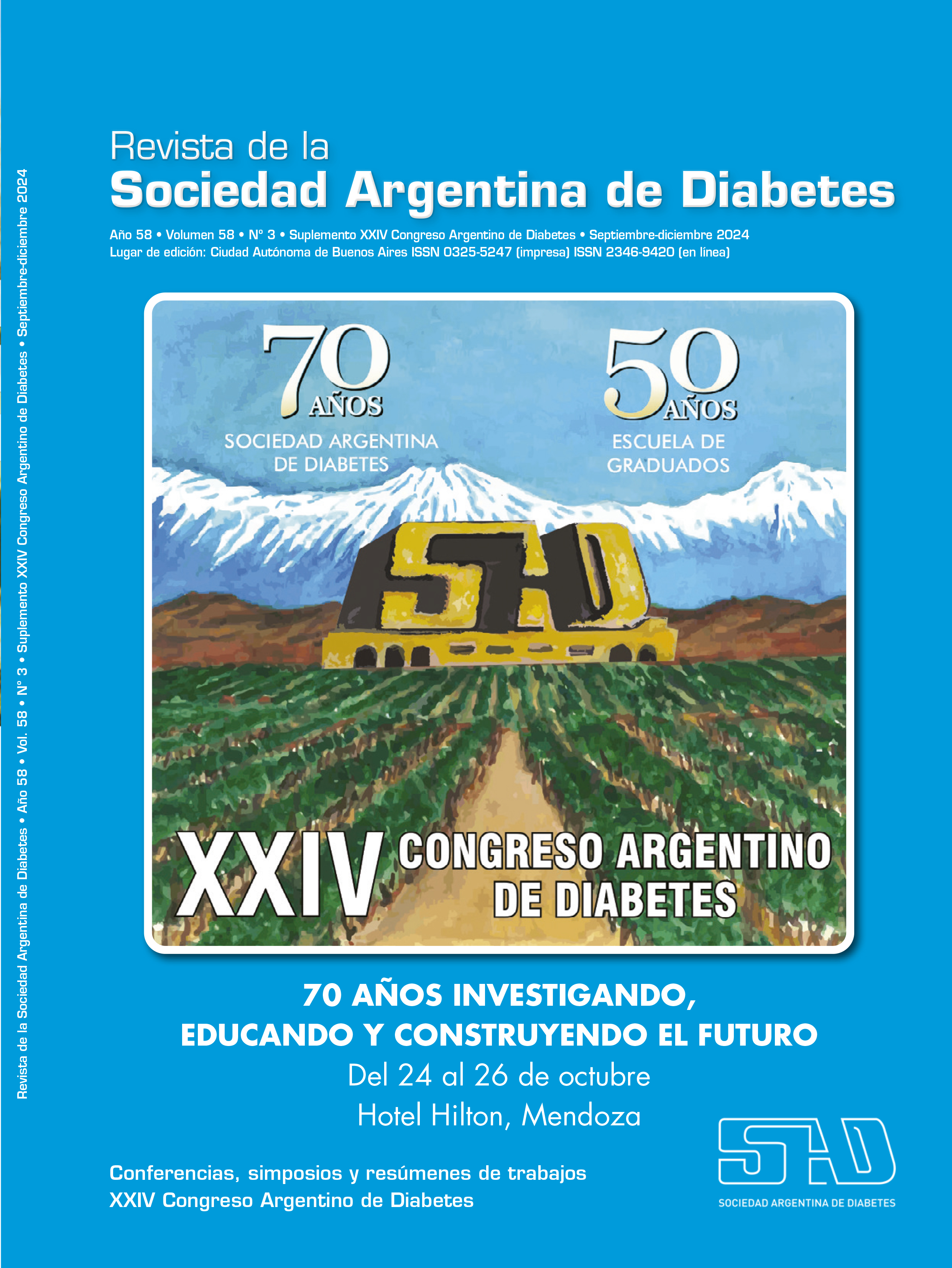Insulinization in the era of continuous glucose monitoring
Keywords:
diabetes, insulinizationAbstract
Insulinization in the era of Continuous Glucose Monitoring (CGM) represents an innovative approach to diabetes management. CGM enables detailed tracking of glucose levels in real-time, facilitating the optimization of insulin therapy. It allows for precise adjustments of insulin doses based on glucose patterns, identifies critical moments of hypoglycemia and hyperglycemia, improves patient education about their disease, and facilitates the detection of errors in insulin administration.
To implement insulinization strategies with CGM, one can start with basal glucose profiles and adjust as necessary, use CGM trend arrows to anticipate changes in glucose levels, adjust insulin doses according to physical activity and carbohydrate intake, and regularly reassess and adjust insulin therapy.
Benefits for patients include improved glycemic control, reduced frequency of hypoglycemia, increased patient confidence and autonomy, and improved quality of life.
However, there are also challenges and considerations, such as the cost and accessibility of CGM, the need for patient and professional education and training, proper interpretation of CGM data, and collaboration between patients and professionals to optimize therapy.
In conclusion, insulinization in the era of CGM offers a personalized and effective approach to diabetes management. Diabetes specialists must be aware of the advantages and challenges of CGM to provide the best possible care for their patients.
References
I. American Diabetes Association Professional Practice Committee; 7. Diabetes Technology: Standards of Care in Diabetes 2024. Diabetes Care 1 January 2024; 47 (Supp1): S126-S144. doi: 10.2337/dc24-S007.
II. Beck RW, Riddlesworth T, Ruedy K, et al. Effect of continuous glucose monitoring on glycemic control in adults with type 1 diabetes using insulin injections: The DIAMOND Randomized Clinical Trial. JAMA 2017;317(4):371-378. doi:10.1001/jama.2016.19975
III. Galindo RJ, Aleppo G. Continuous glucose monitoring: The achievement of 100 years of innovation in diabetes technology. Diabetes Res Clin Pract. 2020 Dec;170:108502. doi: 10.1016/j.diabres.2020.108502.
IV. Maiorino MI, et al. Effects of continuous glucose monitoring on metrics of glycemic control in diabetes: a systematic review with meta-analysis of randomized controlled trials. Diabetes Care 2020;43(5):1146-1156. doi: 10.2337/dc19-1459.
V. Yoo JH, Kim JH. Advances in continuous glucose monitoring and integrated devices for management of diabetes with insulin-based therapy: improvement in glycemic control. Diabetes Metab J 2023 Jan;47(1):27-41. doi: 10.4093/dmj.2022.0271.
Downloads
Published
Issue
Section
License
Copyright (c) 2024 on behalf of the authors. Reproduction rights: Argentine Society of Diabetes

This work is licensed under a Creative Commons Attribution-NonCommercial-NoDerivatives 4.0 International License.
Dirección Nacional de Derecho de Autor, Exp. N° 5.333.129. Instituto Nacional de la Propiedad Industrial, Marca «Revista de la Sociedad Argentina de Diabetes - Asociación Civil» N° de concesión 2.605.405 y N° de disposición 1.404/13.
La Revista de la SAD está licenciada bajo Licencia Creative Commons Atribución – No Comercial – Sin Obra Derivada 4.0 Internacional.
Por otra parte, la Revista SAD permite que los autores mantengan los derechos de autor sin restricciones.




























